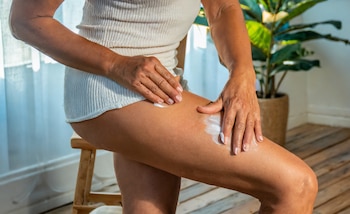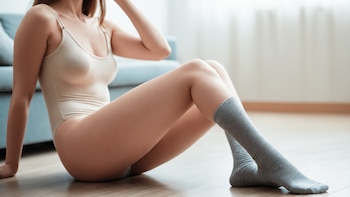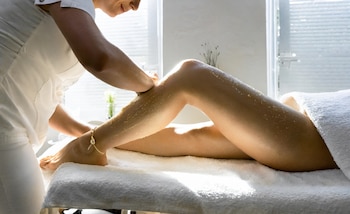






Cellulite, an aesthetic alteration that affects between 85% and 90% of women since adolescence, it can become a concern at this time of year.
Although does not compromise health, Its presence generates concern and discomfort, especially because the factors that cause it are varied and complex.
The call “orange peel” arises from a accumulation of fat in the hypodermisthe deepest layer of the skin, which forms the characteristic nodules and dimples. Accept This body phenomenon is crucial, but for many women, improving their appearance is a necessity.
As explained to Infobae the surgeon Cristina Sciales (MN 66,744), “it is important to maintain a series of habits that will help improve the appearance of the skin,” in reference to the importance of a balanced diet and staying active.
Despite cellulite does not distinguish between thin or overweight peoplea sedentary lifestyle, the consumption of foods rich in fats and carbohydrates, and factors such as stress, tobacco and certain medications can aggravate its appearance. “Cellulite is not a matter of life or death, but taking care of your skin with healthy habits “It makes a difference,” he insisted.

The process of cellulite formation is not simple. Various factors are intertwined, among them hormonal, genetic and inflammatory. The doctor specializing in plastic and reconstructive surgery Alfredo Romero (MN 105,550) pointed out that circulatory disorders, together with fluid retention and loss of skin elasticity, aggravate the appearance of cellulite.
“The skin acquires a flaccid and pitted appearance, not only due to the increase in fat, but also due to the combination of various processes that affect the dermis“Romero explained.
This problem, predominantly femalehas a lot to do with the arrangement of fatty tissue under the skin. In women, the fibers that maintain subcutaneous fat are arranged in a way vertical, which facilitates the formation of dimples. This contrasts with men, where these fibers are distributed evenly. oblique, which explains why cellulite is rare in them. Furthermore, factors such as pregnancy or taking contraceptives They also contribute to its appearance, due to the associated hormonal changes.

Not all cellulite is the same. Sciales classified this phenomenon into four typesranging from the hardest to a mixture of several:
- Indurated cellulite: characterized by being dense and painful to the touch, with a grainy texture and adhered to deep tissue.
- Edematous cellulitis: It manifests itself in legs with enlargement and painful nodules, and is associated with venous or lymphatic insufficiency.
- Flabby cellulite: most common in women over 40, producing spongy, mobile tissue, often accompanied by lax skin and stretch marks.
- Mixed cellulite: combines features of the other three forms.
Each type requires a different approach in its treatment, and it is essential that it be diagnosed by a specialist to determine the best way to approach it.

Given this panorama, the solutions are neither simple nor miraculous. The doctor specializing in plastic and aesthetic surgery Griselda Seleme (MN 80,033) stressed in dialogue with this medium the importance of a personalized and multidisciplinary treatment to combat cellulite.
“Cellulite is not all the same,” he stressed, and highlighted that depending on the type and texture of the affected tissue, different approaches are required. “We can fight it and treat it, but miracles do not exist”said the expert, who works with her patients through combined treatments that include technology, exercise and changes in diet.
One of the fundamental pillars for prevention is maintaining healthy lifestyle habits. Drink enough waterapproximately two liters a day, helps the body eliminate toxins and improve skin elasticity. Likewise, a diet rich in fruits, vegetables and proteins Light foods, such as fish and poultry, help keep skin tissue firm. The sport practice It is also essential, since it promotes circulation and prevents the accumulation of fat.
“It is crucial to understand that the predisposition to suffer cellulite is very high”Seleme highlighted. The vast majority of women are genetically predisposed to developing some degree of cellulite throughout their lives, which makes prevention through an active and healthy lifestyle even more relevant. “The key is to be constant and not expect quick solutions,” he added.

The modern lifestyle, characterized by high stress levelsalso contributes to the appearance of cellulite.
At this point, Sciales explained that stress causes the release of cortisola hormone that promotes fat accumulation, especially in the legs. “The body reflects our emotions, and stress leaves its mark on various parts of the body, including the skin,” said the expert.
Furthermore, the tobacco and alcohol consumption It aggravates the problem by damaging microcirculation, which prevents the skin from receiving the oxygenation and nutrients necessary to remain firm.
certain medicationssuch as antihistamines, beta blockers, and antithyroid treatments, are also associated with worsening cellulite, adding another layer of complexity to treatment.

Ultimately, although cellulite is an extremely common phenomenon, the combination of medical treatments, healthy habits and acceptance of one’s own body can make this aesthetic concern more bearable. “You don’t have to go crazy with cellulite. It is something that affects almost all womenand although its treatment is not simple, it is possible to improve its appearance,” concluded Sciales, emphasizing the importance of don’t get obsessed with this problem and adopt a balanced perspective.
Cellulite, like so many other aspects of the female body, continues to be a challenge that goes beyond aesthetics. But with the right tools and a holistic health-focused approach, can be kept under control and, above all, learn to live with it without despair.
